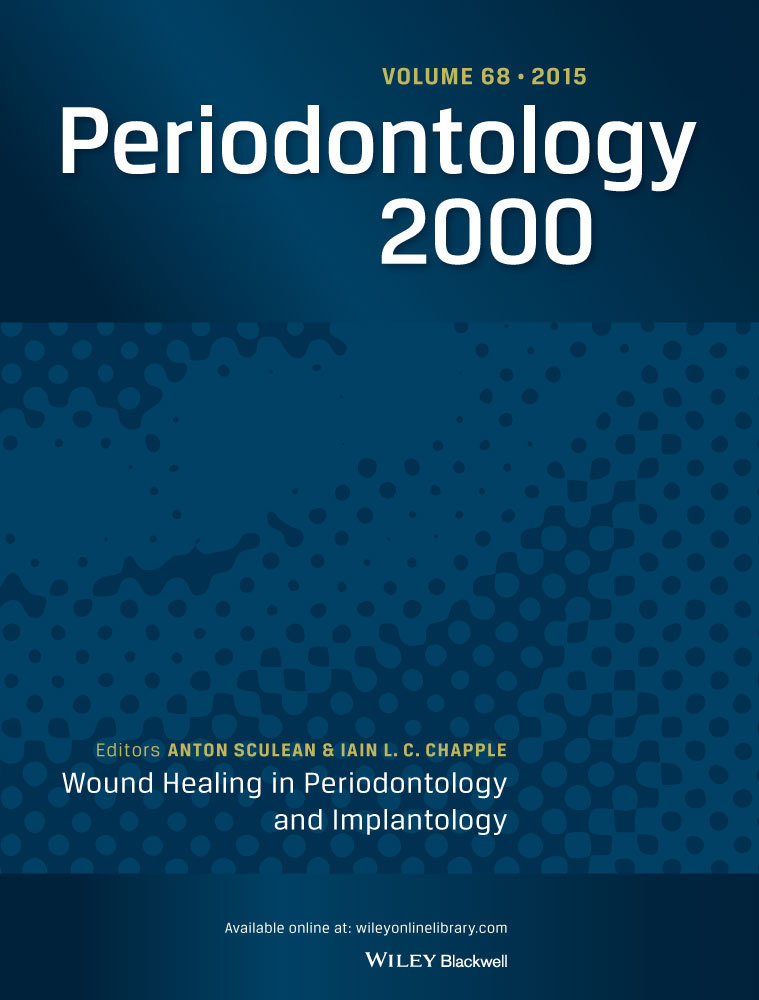牙周病的生物学定义:宿主反应诊断的历史回顾及其对疾病分类的影响。
IF 15.7
1区 医学
Q1 DENTISTRY, ORAL SURGERY & MEDICINE
引用次数: 0
摘要
背景:从生物学角度了解牙周病一直是牙周病研究的中心目标。该领域富有远见的先驱者为我们的知识奠定了基础,为疾病机制和进展提供了宝贵的见解。目的:本综述强调了对牙周病不断发展的认识,特别关注从传统诊断方法到基于分子的方法的转变。材料和方法通过全面的文献检索,综合历史观点和当代证据,进行叙述性回顾。结果近几十年来,一些基础性的发现大大提高了我们对牙周发病机制的认识。尽管如此,目前的诊断方案和分类系统在很大程度上仍然依赖于临床表型,如囊袋深度、附着丧失和放射学变化。这些措施虽然有价值,但缺乏捕捉潜在生物过程的精确性。为了解决这一差距,各种生物样本(如唾液、血液、牙龈组织和牙龈沟液)已被探索作为诊断信息的潜在来源。调查已经确定了多种生物标志物,从特定的细菌种类及其产物到宿主衍生的酶、免疫介质和源自牙周组织的组织降解产物。这些发现共同强调了基于分子的策略在加强疾病检测和监测方面的前景。结论快速、无创、分子诊断牙周炎的趋势日益明显。这种方法不仅可以在牙科内进行更早和更精确的诊断,而且还可以扩展到更广泛的医疗和非牙科环境中应用。本文章由计算机程序翻译,如有差异,请以英文原文为准。
Biological definition of periodontal diseases: A historical review of host-response diagnostics and their implications for disease classification.
BACKGROUND
Understanding periodontal diseases through a biological lens has been a central aim in periodontal research. Visionary pioneers in the field established the foundations of our knowledge, providing invaluable insights into disease mechanisms and progression.
OBJECTIVE
This review highlights the evolving understanding of periodontal diseases, with particular focus on the transition from traditional diagnostic methods to molecular-based approaches.
MATERIALS AND METHODS
A narrative review was undertaken through a comprehensive literature search, synthesizing both historical perspectives and contemporary evidence.
RESULTS
Over recent decades, fundamental discoveries have significantly advanced our knowledge of periodontal pathogenesis. Despite this, current diagnostic protocols and classification systems remain largely reliant on clinical phenotypes such as pocket depth, attachment loss, and radiographic changes. These measures, while valuable, lack the precision to capture the underlying biological processes. To address this gap, a variety of biological samples (such as saliva, blood, gingival tissue and gingival crevicular fluid) have been explored as potential sources of diagnostic information. Investigations have identified diverse biomarkers, ranging from specific bacterial species and their products to host-derived enzymes, immune mediators, and tissue degradation products originating from the periodontal tissues. These findings colectively underscore the promise of molecular-based strategies to enhance disease detection and monitoring.
CONCLUSION
There is growing momentum toward the development of rapid, non-invasive, molecular diagnostic tools for periodontitis. Such approaches could not only enable earlier and more precise diagnosis within dentistry, but may also extend to applications in broader medical and non-dental settings.
求助全文
通过发布文献求助,成功后即可免费获取论文全文。
去求助
来源期刊

Periodontology 2000
医学-牙科与口腔外科
CiteScore
34.10
自引率
2.20%
发文量
62
审稿时长
>12 weeks
期刊介绍:
Periodontology 2000 is a series of monographs designed for periodontists and general practitioners interested in periodontics. The editorial board selects significant topics and distinguished scientists and clinicians for each monograph. Serving as a valuable supplement to existing periodontal journals, three monographs are published annually, contributing specialized insights to the field.
 求助内容:
求助内容: 应助结果提醒方式:
应助结果提醒方式:


